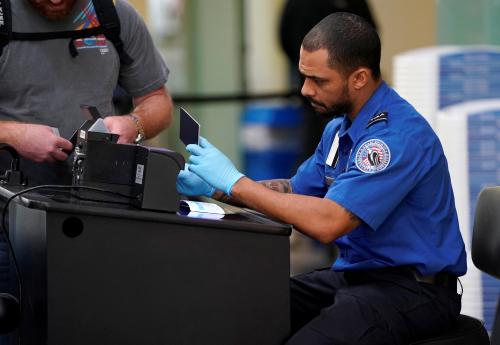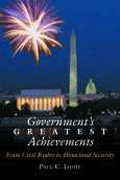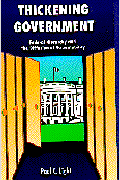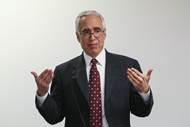After barely a year in operation, the Transportation Security Administration already has become one of the federal government’s greatest successes of the past half century. Created in November 2001, two months after 19 terrorists boarded four planes destined for tragedy, TSA has improved airport security from curb to cockpit. Although there are gaps in any system, travelers are infinitely safer today than they were when TSA was created.
Amazingly, TSA seemed destined to become one of the federal government’s greatest debacles. By its first summer, the agency had lost the confidence of Congress, airport authorities and the airline industry. It was lagging behind in recruiting enough baggage and passenger screeners to field a fully federal workforce by its pre-Thanksgiving deadline, in part because the contractor it had hired was awash in confusion. The agency’s first administrator, John Magaw, spent too much time pushing paper and issuing orders and too little time meeting with airport security directors, who form the backbone of TSA’s leadership corps. When Magaw resigned last summer, TSA was headed for a dismal future as yet another government agency that could not succeed.
Then former Coast Guard Commandant James Loy stepped in. Recruited out of retirement several months earlier to become TSA’s deputy administrator, Loy knew TSA had plenty of reasons to fail. The agency needed to grow from zero employees to more than 60,000 in less than a year, while implementing one of the most deadline-heavy statutes in legislative history. According to TSA’s count, the 2001 Aviation and Transportation Security Act contained 51 deadlines for aviation security alone. Nine of them had to be met within 60 days, another eight within six months, and seven by the anniversary of the legislation. Never had an agency been asked to do so much in so little time-not NASA in the 1960s, not the Environmental Protection Agency in the 1970s, not even the Resolution Trust Corporation, the temporary agency created to sell off the assets from failed savings and loan institutions in the late 1980s.
Loy also knew that TSA had one of the most important missions in America, symbolized by the nine stars and eleven stripes on the arm patches worn by every screener. A terrorist attack on the order of 9/11 must not be allowed to happen again. If TSA failed, Loy knew there was no backup.
The new TSA administrator would be the last to say he made the difference. In fact, Loy’s most important decision may have been not to fire the agency’s top management. Instead, he took the team off site to Rocky Gap, Md., and hammered out a plan to focus the agency. “It may sound a little corny, but I think it was all about passion…Everybody on this team had this passion for not failing,” he said afterwards.
Loy has faced his own challenges as administrator. Unbeknownst to most of the flying public, many of TSA’s 60,000 screeners were recruited during a hiring freeze imposed by the House Appropriations Committee. Once TSA filled its first 45,000 jobs, the committee was convinced that the agency was quickly becoming a bureaucracy and refused to give TSA another penny to hire more permanent employees.
However, Loy knew that Congress and the Bush administration had underestimated the number of baggage and passenger screeners needed. He ordered TSA to finesse the freeze by hiring thousands of temporary employees who could be moved to permanent status if and when the House regains its senses. In the meantime, permanent and temporary workers stand side-by-side on the lines, indistinguishable by either their uniforms or performance.
TSA is still a work in progress. Although it met the Nov. 19 deadline for fielding a fully federalized workforce, and the Dec. 31deadline for screening all checked baggage, it still faces the daunting task of building a fully integrated system for improving transportation security. That means strengthening security in the nation’s deep harbors, on its rail lines and subway systems, and on its roads and bridges.
The agency’s toughest days may still lie ahead. TSA is certain to face a firefight over Loy’s Jan. 9 decision to prohibit screeners from unionizing. As Loy explained his order, “collective bargaining is not compatible with the flexibility required to wage the war against terrorism.” The order came just before the American Federation of Government Employees was to file petitions to create bargaining units at six airports.
Loy may have had little choice. The order is certain to make House appropriators more comfortable with lifting the hiring cap, since the House originally voted against creating a federal workforce in the first place. Moreover, a decision to permit collective bargaining would have been overturned at the White House.
The decision might haunt TSA nonetheless. Few federal agencies depend on a dedicated, stable workforce more than TSA, and fewer still can afford the kind of labor-management turmoil that the prohibition may cause. Working with federal employee unions can be tough, but working without them could be even tougher.









Commentary
Op-edA Come-From-Behind Victory
March 1, 2003